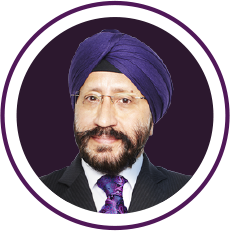Home / Nose Sinuses / Nasal Polyps
Nasal Polyps
Call +65 8125 3580
for 24 by 7 appointment
What are nasal polyps?

Figure - A : Simple polyp. Note the smooth surface.
Figure - B: Benign tumor of the nose called Inverting papilloma. Note the irregular surface.
Figure - C: Malignant tumor of the nose.
Figure - D: Tumor arising from the skull base and extending into the nasal cavity.
A polyp is defined as “a small growth, usually benign with a stalk, protruding from a mucous membrane”.
Hence polyps may occur in any part of the body that is lined by mucous membrane, such as the gastro-intestinal tract, genito-urinary tract and the respiratory tract that includes the nasal cavity.
Polyps in the nasal cavity usually results from a chronic inflammatory disease of the nasal cavity and sinuses. The mucosal surface, which as a result of inflammation becomes laden with inflammatory exudates, results in a swelling or a “polyp” that prolapses into nose. Multiple polyps give the appearance of “grapes like growth” in the nasal cavity. Nasal polyps is not a single disease entity, but rather a multifactorial manifestation of disease.
Nasal polyps may also result as a mucosal reaction to fungal disease of the sinuses particularly when the patient is allergic to fungus. This is called “allergic fungal sinusitis”.
Not all nasal polyps are related to chronic infections. The antro-choanal polyp is an example. It is a polyp that originates in the maxillary sinus and extends out in the nasal cavity. It may enlarge considerably in size to block the entire nasal passage on that side.
The prevalence of polyps is about 4% of the population. Of these, a significant proportion may be trouble by asthma, aspirin sensitivity or allergy. Males are affected 3 times more commonly than females and polyposis affects adults, rather than children.
If the nasal polyps are very small, patients may not have any symptoms. Large polyps cause nasal obstruction, the main symptom that patient present with. Other symptoms include, post nasal discharge, sinus related headaches, diminished or loss of sense of smell.
The diagnosis is usualyy establised on endoscopic examination of the nasal cavity. Computed tomogram scans of the nose and sinuses may be required to evaluate the extent of the polyps.
Polypoid lesions in the nose may occur. These swelling look like polyps but are not polyps. A polyp arising only on one side of the nose should arouse suspicion as a unilateral polyp may be more than a simple polyp. These polypoid lesions may be benign or malignant cancers arising with in the nose and the sinuses ot extend into the nasal cavity from the surrounding regions such as the brain and the orbit. Though polypoid lesion may clinically look different from nasal polyps on the surface, imaging studies may be necessary to make the distinction..
Nasal polyps can be managed medically with topical or oral steroids. Oral steroids are more effective, but have a higher side effect profile when used long-term. Usually bursts or pulses of steroids are given for 1-2 weeks duration.When patients fail medical management, surgical intervention can be considered. This usually entails endoscopic sinus surgery under general anaesthesia. Occasionally polyps can be removed in the clinic to create a better breathing space for the patient, however the correct instruments need to be available.
After surgery, there is however a high recurrence rate, unless ongoing medical management is instituted. This involves using washes and intranasal steroids. Sometimes, widely opening the eight sinus cavities is necessary in severe disease. This facilitates the washes and sprays reaching the lining of the nose and the sinuses.
Not sure if you're in need of treatment for nasal polyps? Speak to A/Prof Sethi to find out the right treatment for you at +65 8125 3580. Or book an appointment with A/Prof Sethi for a consultation on your symptoms and treatment options.
